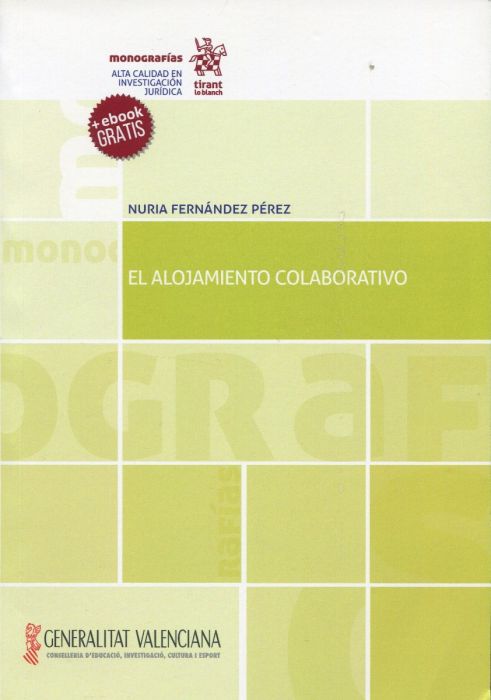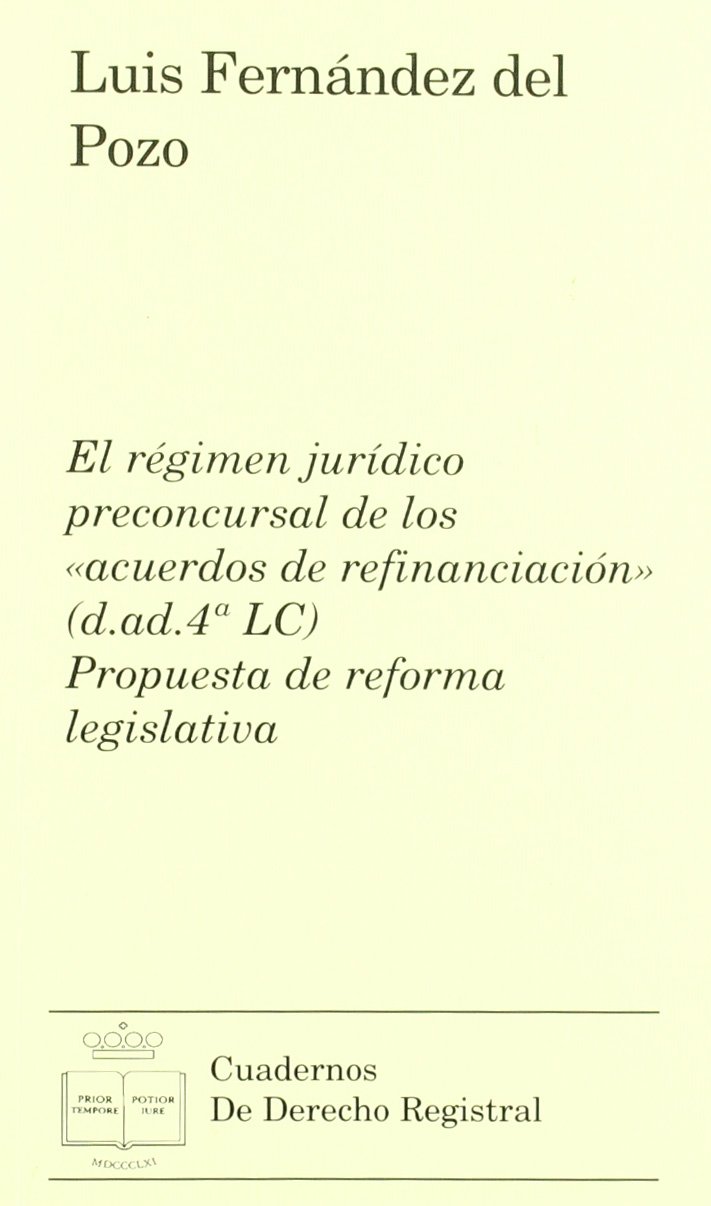Garrigues is an international tax and legal services firm that provides business law advice on the main economic scenarios of the global marketplace. Since its creation in 1941, the firm has been noted for its international outlook and innovative nature. This guide has been produced by Garrigues’ Investment Funds and Distressed M&A team, a cross-functional group within the firm, led by partners from the Corporate, M&A and Restructuring departments, which comprises the M&A, Real Estate, Banking and Finance, Capital Markets, Restructuring & Insolvency and Private Equity teams. The team is regularly involved in a variety of transactions, related to NPLs and REOs portfolios, real estate businesses, single assets or servicers, direct lending transactions, purchases and sales of businesses of insolvent companies, secondary deals, securitizations, trades and debt recovery analysis of large companies. Garrigues’ Investment Funds and Distressed M&A team stands out among its competitors on the basis of the strong background of its members and the teamwork between all of them, which places Garrigues in a second-to-none position to globally advise our clients from the early stages of any distressed transaction until successful completion and, when advising the buy-side, until effective work-out of the debtor positions acquired. Clients from Garrigues’ Investment Funds and Distressed M&A team recognize the value that the law firm adds to their businesses, understanding the economic, financial and legal needs, offering tailored solutions, managing complex processes and situations and achieving the highest standards of performance regardless the transaction’s type or size. The aim of this guide is to satisfy the curiosity of anyone interested in distress transactions in Spain and to share some of the experiences and lessons Garrigues learned in this field over the years.
Prologue.
In 2007, encouraged by the real estate euphoria that still prevailed in Spain, I decided to buy a small 40 sqm apartment in the Madrid district of Bellas Vistas, considered, among other reasons, as one of the locations with the most reasonable prices within the M-30, the city’s ring road.
The price I paid at that time per square meter is still notably higher than the current average price per square matter in the District of Salamanca, the city’s most expensive district.
I could not have bought at a worse time. Barely a year later, in July 2008, the EURIBOR beat its all-time record (5.4%) and the market conditions forced me to call upon my family for financial assistance. However, all things considered, I felt lucky compared with others who had nobody to turn to.
Spain was coming out an economic boom which was particularly noticeable in the period 1998–2008, with an accumulated growth of GDP in the period of 174%, reaching a rate of unemployment for the first time in its history below 10% and showing the best surplus figures since the arrival of democracy.
In banking and financial terms, in 2008 Spain had 45 savings banks and 12 banks. The sector’s default rate was negligible despite the impulsive growth of credit investment driven essentially by the construction sector.
The trend in house prices had been extremely positive since the beginning of the century, peaking in the first quarter of 2008, with prices 126% higher than the year 2000.
In 2004 we boasted in Spain about the construction of 675,000 dwellings, a national record for the fourth consecutive year, and a figure similar to that of Germany, France and Italy together. In the period from 1994 to 2004 21% of the total national stock of dwellings had been built and prices had increased by 147%, four and a half times that of salaries.
Obviously, like me, many people and companies found themselves strongly dependent on finance provided by banks for the purchase of their homes, for their business projects or simply so as not to be last to jump on the property boom bandwagon, the speed of which very few involved seemed to be really interested in controlling.
When on September 15, 2008, Lehman Brothers filed for bankruptcy and officially marked the beginning of one of the most severe global economic crises in our recent history, the blow seemed to catch Spain unprepared; which is really strange considering that in the summer of 2007 the subprime mortgage crisis had already begun in the United States.
The banking sector was one of the sectors that the crisis seemed to catch wrong-footed. In 2008 this sector had a clear focus on aggressive growth in assets, very low default levels and a relative significant weight of savings banks; these institutions, with almost a two-century history, originally had the honorable objective of combating usury, but were already very far-removed from those noble principles. Almost two centuries of history went down the drain in a little over two years, since they are currently only two surviving (Caixa Ontinyent and Caixa Pollença).
I think that the word which best defines this first stage of the wilderness is the uncertainty in numerous angles. Uncertainty about the very scale of the crisis, uncertainty about the actual stock of assets that had become distressed or doubtful in the system, and uncertainty about credit servicing capacity.
Particular attention should be paid to the uncertainty regarding the actual value of the real estate assets on which our banking system was based and which were the motor of its intense growth in the years before the crisis. In order to be able to understand the full extent of this aspect, we must not forget that since their peak at the beginning of 2008, house prices in Spain dropped constantly until they hit rock bottom in 2015, the variation between both times being –42%.
This extremely serious adjustment would be one the great features of the crisis in Spain. To get an idea of the extent of the difference in this respect, in neighboring Portugal, in that same period that adjustment was only -8%.
It should also be emphasized that, in this first stage, to be specific in March 2009, the Spanish Government bailed out Caja de Castilla La Mancha (savings bank), constituting the first major intervention in a financial institution in this country since that of Banesto in 1993.
As we have highlighted, uncertainty was one of the characteristics which best defined those initial post-Lehman years. Another of the characteristics of that time was undoubtedly the intense ignorance of the alternatives and possibilities which the distress market would offer throughout the following years.
At the beginning of 2011 an important milestone occurred which marked a change in the dynamics of the distress market in Spain: Banco Santander sold part of its recovery subsidiary Reintegra to Lindorff together with a non-performing consumer loan portfolio and a service level agreement. That was the first transaction in 2011 which ended with a number of distress transactions greater than the total of the previous four years.
The sale of Reintegra was one of the first steps in an interesting and intense process of outsourcing of recovery systems by financial institutions to more specialized companies.
This type of transactions has led to greater professionalization and industrialization of the credit servicing sector in Spain, promoting the dynamism of the distress market by reducing the uncertainty relating to servicing capacity. This is clearly shown by the fact that the number of distress transactions has continued to grow since then.
An important milestone in that trend occurred in September 2013 the U.S. fund Cerberus acquired the real estate management and developer loan business of Bankia. This was the first of other very similar transactions in which other players participated in a short period of time: Servihabitat (September 2013), Aliseda (December 2013), Altamira (January 2014), Anticipa (June 2014) and Cimenta (June 2014), among others.
Now, many of the distress investors incorporated in-house servicing capacity, not only to meet future purchases of own portfolios but also to manage assets of third parties. Among all those third parties particularly noteworthy was Sociedad de Gestión de Activos procedentes de la Reestructuración Bancaria (Company for Management of Assets derived from Banking Restructuring) (“SAREB”), created in 2012 with no fewer than €51 billion toxic assets derived from some of the most seriously affected financial institutions.
As we mentioned, the market situation had already radically changed and that dynamic market was reflected in a much more significant volume of transactions in terms of number and nominal value, and more importantly, the mix of secured and REOs (“Real State Owned” by lenders) portfolios was clearly gaining weight compared with previous years, in which there had been a clear predominance of unsecured portfolios.
A good example of the revitalization of the market is «Project Hercules», when in July 2014 Blackstone acquired a portfolio of 40,000 mortgages and a nominal value of €6.5 billion. The importance of this transaction lies, not only in its size, involving an investment for Blackstone of €3.6 billion in Spain (exceeding all the distress transactions together since the beginning of the crisis), but also due to the type of asset, since they were essentially doubtful mortgages in the hands of individuals.
In addition, it was also clear that there was full certainty on the market regarding the possibility of financing this type of transactions.
The number of distress transactions has continued to grow from 2011 up to the present day, and in recent years, after the above-mentioned professionalization of the credit servicing sector, the volume of secured transactions has gained substantial weight.
So much so that in March 2018, Santander transferred to Blackstone no fewer than €30 billion of residential property of Banco Popular to a company called «Project Quasar Investment 2017» in which Santander itself would have a 49% shareholding.
From then onwards, in 2018 itself, other very significantly sized transactions occurred in Spain, such as the sale of 80% of the real estate business of BBVA and Caixabank to Cerberus and Lone Star respectively, or the sale of €9 billion of REOs by Sabadell also to Cerberus (Projects «Challenger» and «Colliseum»), placing the nominal value of transactions in the period 2017–2018 at levels above €100 billion, constituting an absolute record at European level. Coincidentally these values were recorded on the tenth anniversary of the Lehman blow.
Ten years have passed now since the “official commencement” of the crisis and if we take advantage of the occasion to look back, it is surprising the scale and impact which the distress market has in Spain. In approximate figures, in these 10 years about 300 transactions of a significant size have been concluded, with a nominal value of €250 billion. In terms of participation, at least 80 different investment groups have been involved in them.
In these years, Spanish banks have divested a significant part of that initial stock of toxic assets which seemed incalculable in 2008 and they have internalized the sales of portfolios as an effective alternative for their long-term management.
This normalization process has become engrained in financial institutions with the creation of their own divestment teams, with the strengthening of these teams’ relations with investors, with the analysis of the suitability of these transactions from an opportunity cost perspective, with the existence of increasingly expert independent advisers and, of course, with an ever more considerable track record of transactions in Spain.
In summary, I believe that this marked institutionalization process which the distress market has experienced in Spain, not only in financial institutions but also among other stakeholders, is a strong determining factor in trusting its durability in this country in the coming years.
There are still very substantial portfolios of non-performing assets in the Spanish financial system, both in debt format and in REO format, which continue to drag down the balance sheets of banks and would surely be sold if the institutions could with a certain ease assume the impacts of such divestments. Taking into account that, although it is not a usual kind of financial institution, at present, SAREB continues to manage €37 billion of doubtful assets.
On the other hand, the distress market has meant, above all, a clear process of transfer of nonstrategic assets (essentially doubtful assets) from banks to specialized purchasers. Such assets continue to demand clear and specialized management needs so that they can be converted into liquidity ensuring the business plans of their owners and continue to pose a direct opportunity both of purchase and of ongoing management.
Closely related to this existence of transformation needs is the proliferation, increasingly obvious, of purchase opportunities on the secondary market. Even as an evolutionary step beyond the market, in recent months “third round” transactions are occurring in this country. In order to close the circle, in recent months we have managed to confirm that financial institutions themselves were expressing interest in the most performing tranches of portfolios which are already owned by funds.
Further evidence of the market turnaround occurring in recent months is the repurchase by certain financial institutions of their real estate management platforms previously sold to funds in the years 2013–2014.
From my point of view, it would be fair to acknowledge the very important impact that the distress market has had on other industries which have been very watchful of its development, participating in different ways in it and undoubtedly taking advantage of its momentum. These “parallel” industries could be divided into three main groups: finance, real estate and technology. It is very obvious that the three are closely interconnected.
Proof of this is the application of technology to the financial angle (Fintech) which seems to be revolutionizing it. Furthermore, the options for application of technology to the real estate section are also obvious (i.e. real estate big data).
These industries linked to the distress market also constitute important business and investment opportunities for those interested in participating in this market from a less conventional perspective.
In conclusion, having firmly resisted both external attacks such as Brexit and other more domestic attacks arising from the political situation in Spain in recent years, the distress market is still undoubtedly an attractive and sustainable investment alternative in Spain, and one which offers numerous angles for participation both for expert players on the market and for others that are inclined to participate in it in the coming years.
It is for this reason that a book like this is very useful at the present time, since it contains the different possibilities for action when faced with distressed assets, the ways of financing or acquiring companies involved in insolvency proceedings and the Spanish legal peculiarities in this area, all of this illustrated by examples of the most important transactions performed in the distressed arena.
This work, which shows the lessons learned in these years by the global firm Garrigues, may help purchasers, sellers and distress market advisers to use all the possibilities available to them and to conclude, as we do, that the Spanish distressed assets market is extremely attractive. Nobody doubts anymore that, as a result of the vast experience in negotiation and closing of purchase and sale agreements relating to these transactions, there is a clear framework for reasonableness of contractual terms for purchasers and sellers.
Garrigues’ book gives us an insight into the future and a legal landscape of Spain so that agents can act in permanent or interim situations of financial stress and can help companies with difficulties (above all medium-sized and new companies) to find finance by means of the varied instruments tested in these recent years.
It is a subject which, as is very well defined in the introduction to the book, covers a wide range of aspects, all them arising from a situation of financial stress experienced by over indebtedness companies and individuals and giving rise to high levels of distressed assets in the financial system.
The merit of Garrigues’ book is that it offers all this information systematically, with clear and direct language aimed at the institutional investor, but not failing to cite the legislation applicable and many examples of specific cases, in which Garrigues has been involved with undoubted success. All of this allows one to ascertain the advantages and drawbacks of each class of transaction and helps the different market players to guide their decisions in an optimum and informed manner.
I am sure that this huge effort of definition and development in all the chapters of the book summarizes to perfection the legal and legislative certainty which now exists in this country in relation to the distress market.
Garrigues, once again, shows that it is a pioneer on the Spanish legal market, by publishing in English a book which will help the sector to keep on the safe side in a changing economic and regulatory environment.
Lastly, I would like to recognize the confidence that all clients and players have placed in Alantra CPA allowing us to keep participating actively as a sell-side financial advisor within the market.
Félix Rivera Fernández








